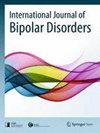2014 年至 2021 年精神科住院病人的锂处方趋势:巴伐利亚药物监测项目提供的数据
IF 3.5
2区 医学
Q2 PSYCHIATRY
引用次数: 0
摘要
锂(Li)仍然是治疗情绪障碍最有价值的方法之一。然而,目前人们对德国的处方做法了解有限。本研究的目的是估算当前锂在不同时期和特定诊断中的使用率,重点关注与临床相关的方面,如老年患者的处方率、伴随用药、重要的药物相互作用和严重不良事件。我们对 Li 处方进行了描述性分析,分析了巴伐利亚多中心药物安全项目 "药物流行病学与警戒"(Pharmako-EpiVig)2014-2021 年的数据。我们的研究纳入了 97422 名住院患者,其中 4543 人被处方 Li。在观察期内,单相抑郁症(UD)的李处方率一直保持在 4.6%。在双相情感障碍(BD)中,处方率从2014年的28.8%大幅上升至2019年的34.4%。此外,30.3%的李处方患者未被诊断为双相情感障碍或躁狂症,15.3%的精神分裂症患者被处方李。大多数(64%)李处方患者被处方五种或五种以上药物。在 178 例高优先级药物相互作用中,大多数是氢氯噻嗪(157 例),其次是奥美沙坦(16 例)。我们的研究并未证实有关李氏处方减少的担忧。2020 年和 2021 年在某些诊断组别中观察到的处方率下降可能与 COVID-19 大流行有关。除 BD 和 UD 外,以症状为导向使用 Li 的情况也很常见。多重用药和药物间的相互作用给 Li 治疗带来了挑战。高龄和合并药物使用障碍似乎并不是阻碍临床医生启动 Li 治疗的主要因素。本文章由计算机程序翻译,如有差异,请以英文原文为准。
Lithium prescription trends in psychiatric inpatient care 2014 to 2021: data from a Bavarian drug surveillance project
Lithium (Li) remains one of the most valuable treatment options for mood disorders. However, current knowledge about prescription practices in Germany is limited. The objective of this study is to estimate the prevalence of current Li use over time and in selected diagnoses, highlighting clinically relevant aspects such as prescription rates in elderly patients, concomitant medications, important drug–drug interactions, and serious adverse events. We conducted a descriptive analysis of Li prescriptions, analyzing data from the ongoing Bavarian multicenter drug safety project Pharmaco-Epidemiology and Vigilance (Pharmako-EpiVig) from the years 2014–2021. Our study included 97,422 inpatients, 4543 of whom were prescribed Li. The Li prescription rate in unipolar depression (UD) remained constant at 4.6% over the observational period. In bipolar disorder (BD), the prescription rate increased significantly from 28.8% in 2014 to 34.4% in 2019. Furthermore, 30.3% of patients with Li prescriptions did not have a diagnosis of BD or UD, and 15.3% of patients with schizoaffective disorder were prescribed Li. The majority (64%) of patients with Li prescriptions were prescribed five or more drugs. Most of the 178 high-priority drug–drug interactions were due to hydrochlorothiazide (N = 157) followed by olmesartan (N = 16). Our study does not substantiate concerns about a decline in Li prescription. The decline in prescription rates observed in some diagnostic groups in 2020 and 2021 may be associated with the COVID-19 pandemic. The symptom-oriented use of Li beyond BD and UD is common. Polypharmacy and drug–drug interactions present a challenge in Li therapy. Old age and comorbid substance use disorder do not appear to be major deterrents for clinicians to initiate Li therapy.
求助全文
通过发布文献求助,成功后即可免费获取论文全文。
去求助
来源期刊

International Journal of Bipolar Disorders
Medicine-Psychiatry and Mental Health
CiteScore
6.70
自引率
5.00%
发文量
26
审稿时长
13 weeks
期刊介绍:
The International Journal of Bipolar Disorders is a peer-reviewed, open access online journal published under the SpringerOpen brand. It publishes contributions from the broad range of clinical, psychological and biological research in bipolar disorders. It is the official journal of the ECNP-ENBREC (European Network of Bipolar Research Expert Centres ) Bipolar Disorders Network, the International Group for the study of Lithium Treated Patients (IGSLi) and the Deutsche Gesellschaft für Bipolare Störungen (DGBS) and invites clinicians and researchers from around the globe to submit original research papers, short research communications, reviews, guidelines, case reports and letters to the editor that help to enhance understanding of bipolar disorders.
 求助内容:
求助内容: 应助结果提醒方式:
应助结果提醒方式:


